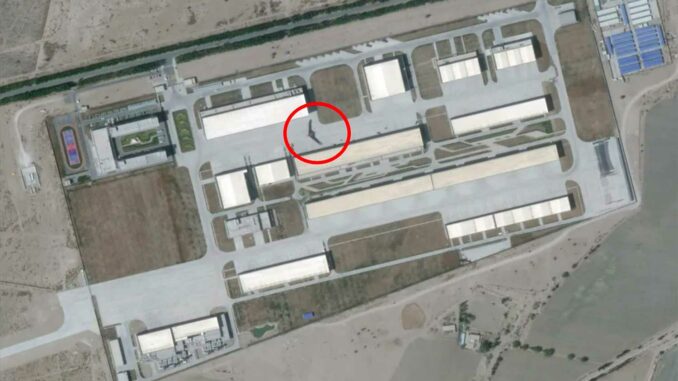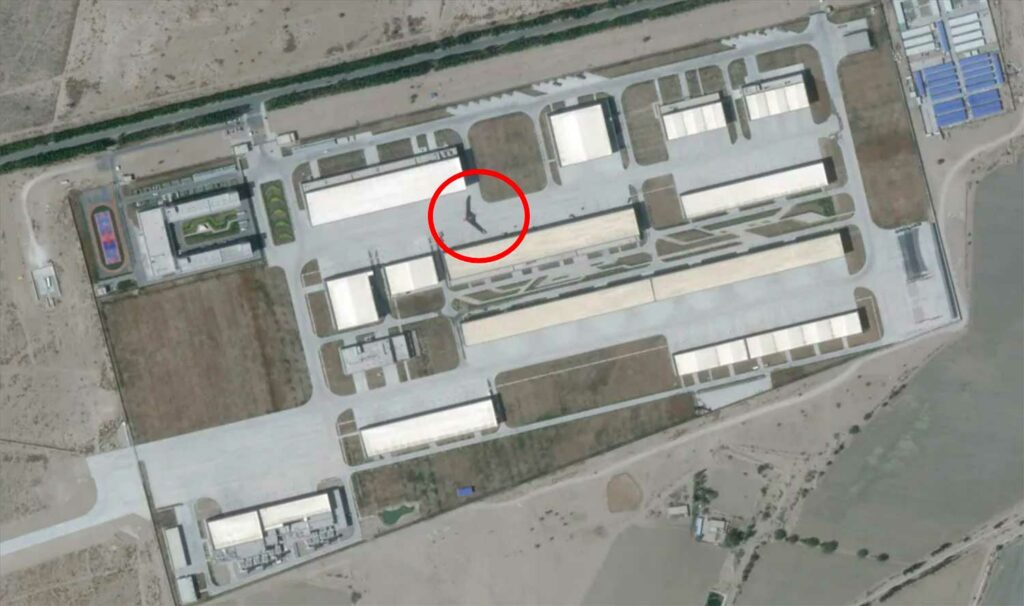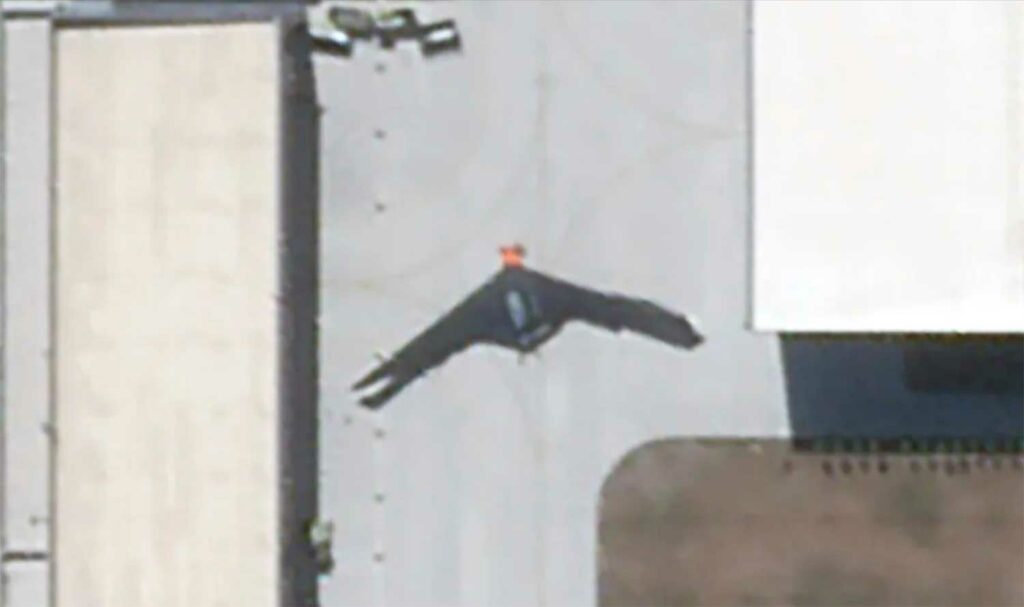
A Chinese HALE drone with a wingspan of 52 meters was spotted in Malan, revealing Beijing’s stealth ambitions in future air warfare.
On May 14, 2025, a satellite image revealed the presence of a giant flying wing-type stealth drone at the Malan test base in Xinjiang. With an estimated wingspan of 52 meters, this drone with no visible cockpit resembles a HALE (high altitude, long endurance) aircraft and could compete with American models such as the RQ-180. The structure of the base, its large, recently built hangars, and the stealth architecture of the aircraft suggest a development center for next-generation air dominance. The appearance of this aircraft could enable China to monitor or strike strategic targets deep in the Pacific. Its apparently deliberate public unveiling raises questions about China’s information warfare strategies and military intentions.

A secret base dedicated to future air warfare
The Malan Air Base, located in Xinjiang province, is now clearly identified as a development center for China’s advanced aviation programs. The area, already known for its drone and bomber testing, now features a newly constructed high-security facility connected by a long taxiway to a main complex.
Work began just over two years ago, and satellite images show several hangars of various sizes: 70 meters, 50 meters, 20 meters, and 15 meters wide. These dimensions are comparable to the structures housing US strategic bombers such as the B-2 Spirit at Whiteman Air Force Base, or the infrastructure at Plant 42 in Palmdale, known for its stealth aircraft prototypes.
This mix of hangar sizes can only be explained by the desire to accommodate a diverse aircraft ecosystem, ranging from small tactical drones to stealth bomber platforms, as well as fighters such as the three-engine J-36 and the future J-XDS.
It is likely that this base will play a role similar to that of the US NGAD (Next Generation Air Dominance) program, combining drones, manned aircraft, and network interoperability for air dominance in the coming decades. This suggests a structured, nationwide effort to compete with the advanced capabilities of the USAF in the long term.
A stealth HALE drone of unprecedented dimensions
The object spotted on May 14, 2025, is a flying wing with an estimated wingspan of 52 meters, very close to that of the B-2 Spirit (52.4 m) and wider than the B-21 Raider, which is still in the ramp-up phase in the US arsenal.
This type of architecture optimizes radar signature reduction and provides an ideal lifting surface for long-endurance, high-altitude missions, which are characteristic of HALE (High-Altitude Long Endurance) drones. The fact that the aircraft is no more than 14 meters long suggests a design optimized for endurance rather than for a large offensive payload.
The small vertical fins visible in the photos, although difficult to interpret, could be necessary for aerodynamic stability in prolonged high-altitude flight profiles. Flying wings are notoriously unstable in pitch and yaw, and discreet control surfaces can mitigate these effects without compromising stealth too much.
The aircraft does not appear to have a cockpit, confirming its unmanned nature. Its design could accommodate antennas for beyond-line-of-sight communications or an integrated X-band AESA radar system. This architecture fits the profile of a strategic reconnaissance drone, capable of operating for dozens of hours at altitudes of over 18,000 meters, and likely equipped with low-signature turbofan engines integrated into the central fuselage.
A deliberate revelation to unsettle adversaries
China has mastered the art of strategic ambiguity, and the exposure of this drone at a time when commercial satellites are passing overhead is probably not accidental. Beijing is well aware that an aircraft of this size and nature cannot remain invisible, even to civilian satellites such as those operated by Planet Labs.
This controlled revelation may serve several purposes:
- Test foreign reactions, particularly from US or Japanese intelligence agencies.
- Launch an information decoy, perhaps by exposing a non-functional prototype or mock-up, in order to fuel speculation and force adversaries to react.
- To reinforce the deterrent effect by indirectly demonstrating a capability to reach areas beyond the second island chain in the Pacific, or even to threaten strategic US infrastructure such as Guam.
In the context of information warfare, this strategy allows China to manipulate adversaries’ perceptions at very low cost. This is part of a broader logic of cognitive warfare, where the calculated visibility of a system creates more pressure than actual deployment.

Extensive military potential in the Indo-Pacific
If this aircraft enters operational service, it could transform the balance of power in the Indo-Pacific region. A stealth HALE drone would enable China to:
- monitor US naval movements at long range without entering no-fly zones;
- map enemy defenses and infrastructure in preparation for air-to-missile operations;
- play a role in communications or target designation, integrated into a strike chain via long-range missiles such as the DF-21D or DF-26.
By extending the range of Chinese strategic intelligence by several thousand kilometers, this type of aircraft would strengthen China’s access denial (A2/AD) capability in potential conflict zones such as the Taiwan Strait and the South China Sea.
By way of comparison, the United States has the RQ-180, a stealth HALE drone whose specifications remain classified, but which is estimated to be capable of flying at over 20,000 meters for 40 hours, with a surveillance range covering the entire Pacific or eastern Russia. If Malan’s drone approaches these capabilities, it marks a significant advance for China’s HALE program and a rapid technological rise in less than a decade.
War Wings Daily is an independant magazine.